 Facebook
Facebook
 X
X
 Instagram
Instagram
 TikTok
TikTok
 Youtube
Youtube
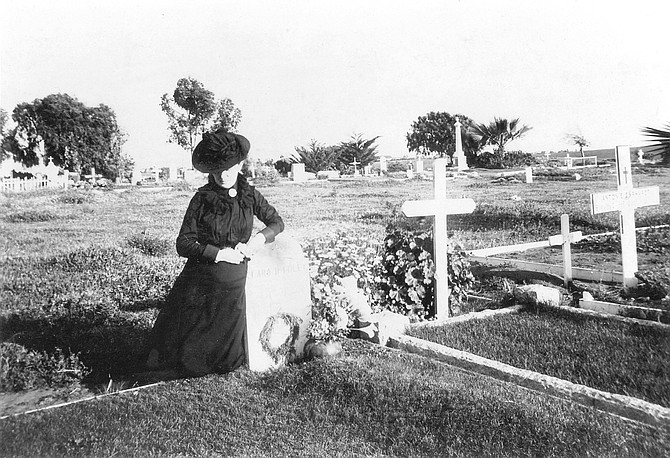
“I’d rather have a monarchy than a republic. The majority of people here cannot rule themselves. We Californios didn’t support the idea of the Mexican republic. This sentiment got passed down in subtle ways. We've never celebrated Cinco de Mayo. Nor do we celebrate September 16, Independence Day. I believe that a monarchy is a way of connecting the individual to the past.”
Bill Manson, November 14, 1996 | Read full article
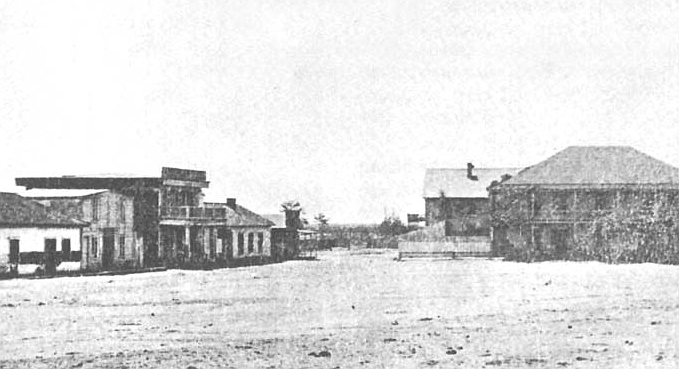
“The only reason half of the emigrants don’t turn back is because they're out of funds; the other half keep moving out of false pride. San Diego resembled 'nothing more or less than an Indian Village.’ There were none of the amenities of the established eastern communities. No hotels, no boarding houses. The once-flourishing Mission of San Diego was now old and deserted.... Other visitors at that time called it 'a miserable seaport town.’"
Jeff Smith, July 2, 1998 | Read full article
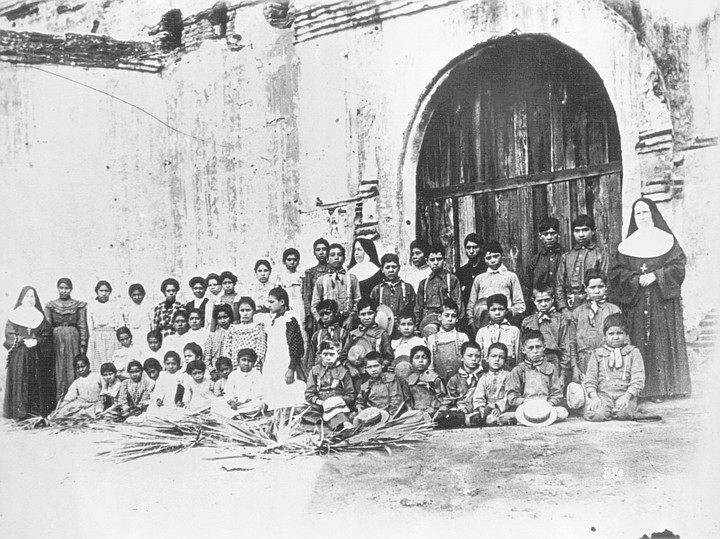
The Spanish colonists believed Indians were primitive “diggers” who never communicated with another settlement. But in 1775, more than 40 rancherias joined to attack San Diego Mission. These included Indians “from [the Laguna Mountains] accompanied by coastal Christian and non-Christian Indians.” Near 1:00 on the morning of November 5, between 600 and 1000 Indians descended on the mission. Using firebrands, arrows, stones, and clubs, they looted the church and set fire to the buildings.
Jeff Smith, July 16, 1998 | Read full article
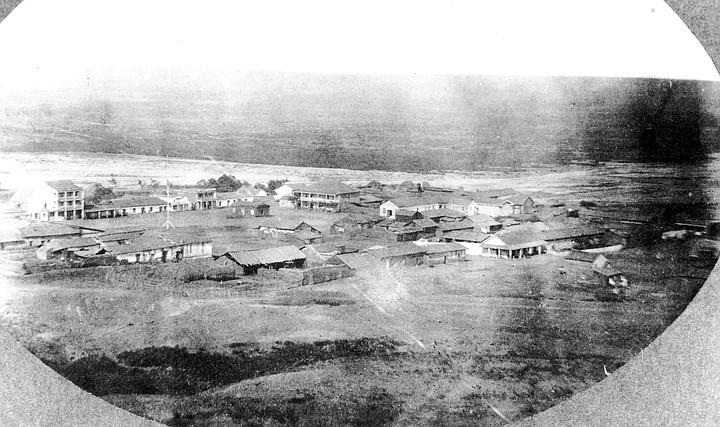
“The sale of whiskey outstripped all other items in popularity. Customers purchased it by the drink, bottle, demijohn, keg, and cask.” In second place, tobacco: “Most of the men, and some of the women smoked; almost every account showed sales of tobacco.” Spices rank high. “In an age of no refrigeration, spices were a necessity to preserve foodstuffs and make them palatable. It's no coincidence that Mexican dishes we enjoy today are highly spiced.”
Jeff Smith, August 12, 1999 | Read full article
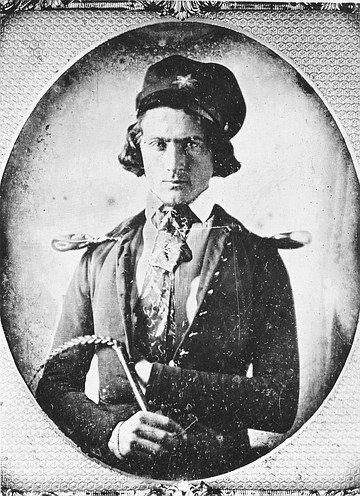
Low wages put Indians in an “ongoing cycle of debt.” Rancheros would lend them food, then required work to repay the “loan.” The cost of food was so inflated, the Indians owed weeks of labor for the donation (one Indian worked one month to pay off $2). An Anglo traveler in 1834 observed that, on the ranchos, “the stock was herded by Indians, who cost them but a trifle more than they eat.”
Jeff Smith, July 13, 2000 | Read full article
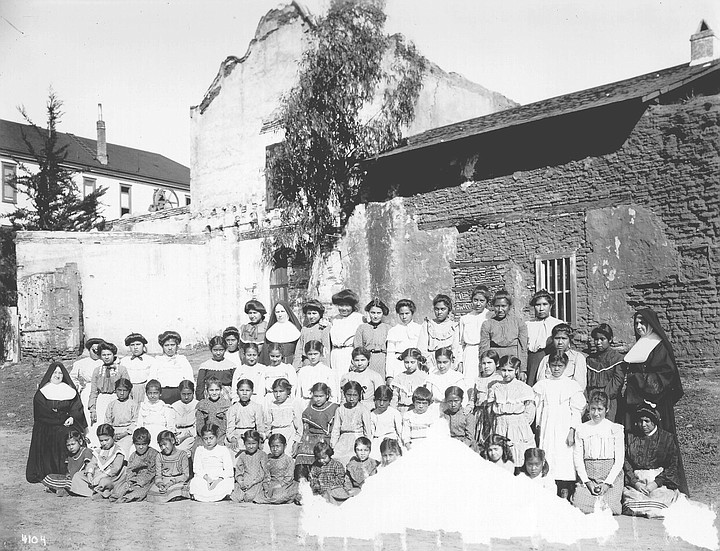
“The soldiers on recruiting forays would drive off the Indian men and lasso the women to satisfy their lust.” The women responded with abortion and infanticide. Abortion prevented “the birth of an Indian child into the mission institution aimed to destroy Indian culture and society.” Women practiced infanticide on racially mixed children. “Their disgust and abhorrence never left them.... In fact, every white child born among them for a long period was secretly strangled and buried.”
Jeff Smith, July 20, 2000 | Read full article
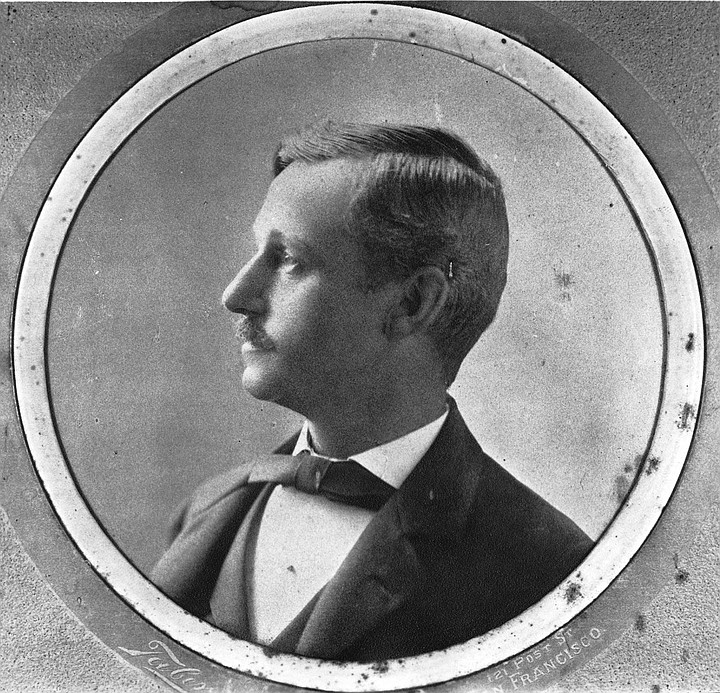
When Don Carillo claimed the land, “thousands of black brant or geese recently departed their winter gathering spot, and now curlews, willets, dowitchers, and snipe waded along the shoreline. Sandy soil nearby gave rise to a dense growth of Spanish Bayonet (a stiff, short-trunked plant with rigid, spine-tipped leaves) and lemonade berry, an evergreen shrub or small tree with white or pink flowers. Tough sumac brush and cactus also grew abundantly on the ‘island.’”
Jeff Smith, Aug. 3, 2000 | Read full article

“On July 1, 1769, soon after the arrival of Father Serra, burials began in consecrated ground on Presidio Hill.... Even though people began moving off Presidio Hill and settled in Old Town, burials still took place within the Presidio walls. These burials included early settlers as well as Mission Indians. The last recorded burial in this location was Henry Delano Fitch, who died in 1849. Indians continued burying their dead on Presidio Hill through the 1870s.”
Barbara Palmer, March 15, 2001 | Read full article
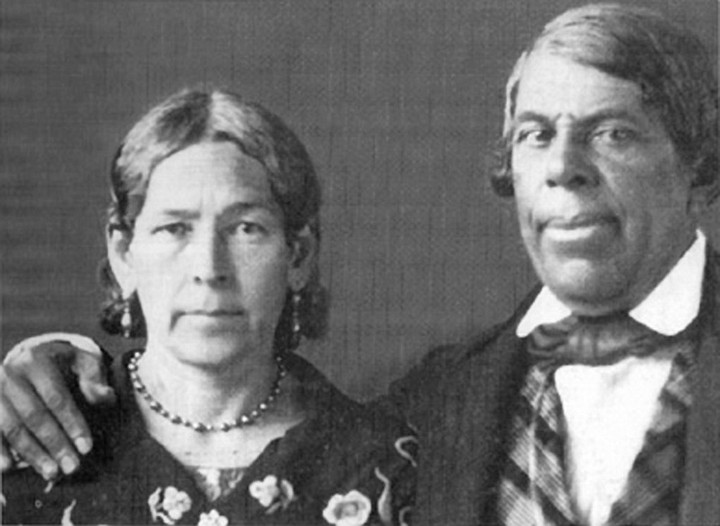
Pico favored the British. He counted many Englishmen among his intimates, including his brother-in-law, John Forrester. Garza says Pico also preferred a British takeover because he thought Americans were aggressive and impatient. “He was quite dismayed about how they were transforming the land. They are cultivating farms, establishing vineyards, erecting mills, sawing up lumber, building workshops, and doing a thousand other things which seem natural to them, but which Californians neglect or despise.”
Jeanne Schinto, April 12, 2001 | Read full article

Candles were never abundant and lighting was limited by today’s standards. "People slept on plank beds, adobe benches or on rawhide stretched across wooden frames. In large families, the sons “threw their blankets wherever they liked, outside or on the covered corridor that circled the interior plaza.” Families purchased sheets, blankets, and pillows when they could afford them. But “even in the simplicity of these homes, one would find satin pillow covers edged with lace or embroidering.”
Jeff Smith, July 19, 2001 | Read full article
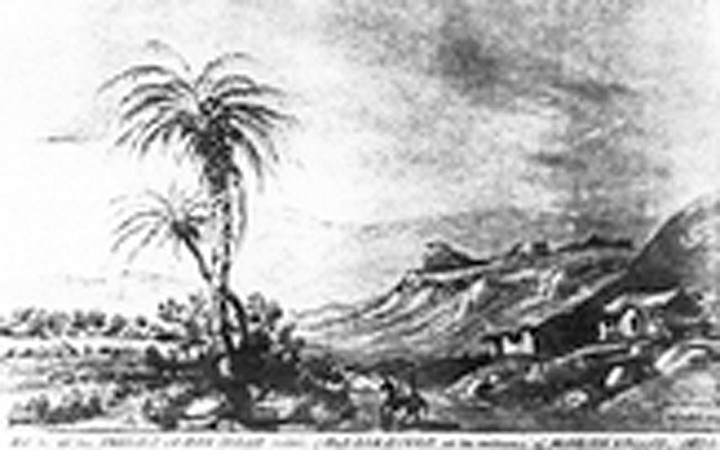
“Typically, chapel bells would ring the ‘Ave Maria,’ and all would kneel and pray or recite the Angelus. The meal was taken after.” People ate pozole (barley or other grain boiled with beans — and sometimes, stewlike, including maize, pig’s feet, pumpkin, and peppers) and puchero soups, made from available meats and vegetables (especially cabbage and squash). Another staple: potatoes mixed with chili and cheese.
Jeff Smith, Aug. 2, 2001 | Read full article

The strongest, most beautiful woman in the world, Calafia, lived on a remote island “very close to the site of the Terrestrial Paradise”— i.e., Eden, which, Columbus and every explorer that followed him believed, stood on the “right hand” of the Indies. Calafia was a black queen and ruled the “strongest island in all the world,” called California, also on the Indies’ “right hand.” It had “steep cliffs and rocky shores.”
Jeff Smith, Sept. 6, 2001 | Read full article
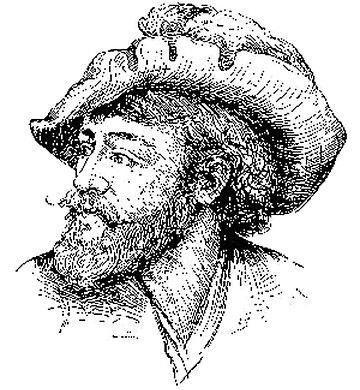
In 1539 Cortez still believed Baja was an island. He ordered Francisco de Ulloa to sail three ships from Acapulco to La Paz, then up the east coast of Baja, to find a passage north. Ulloa lost one ship, in transit, to the Gulf of California’s notorious storms. When he reached the river-mouth of the Colorado, the tides spun his ships around — and proved that “California” was actually a peninsula. Few believed his report.
Jeff Smith, Sept. 13, 2001 | Read full article

The thing about Markey: his resumé impresses, but he always added something more. He wasn’t just a journalist; he worked with Damon Runyan. He lived at the Algonquin Hotel, the famous literary hub. And his writing shows a flare for the sensational, as if his goal were violent reactions, not truth. His 1932 novel, For Women Only, described, in detail quite graphic for the time, the “sins” of almost every officer in the 11th Naval District.
Jeff Smith, July 11, 2002 | Read full article


“I’d rather have a monarchy than a republic. The majority of people here cannot rule themselves. We Californios didn’t support the idea of the Mexican republic. This sentiment got passed down in subtle ways. We've never celebrated Cinco de Mayo. Nor do we celebrate September 16, Independence Day. I believe that a monarchy is a way of connecting the individual to the past.”
Bill Manson, November 14, 1996 | Read full article

“The only reason half of the emigrants don’t turn back is because they're out of funds; the other half keep moving out of false pride. San Diego resembled 'nothing more or less than an Indian Village.’ There were none of the amenities of the established eastern communities. No hotels, no boarding houses. The once-flourishing Mission of San Diego was now old and deserted.... Other visitors at that time called it 'a miserable seaport town.’"
Jeff Smith, July 2, 1998 | Read full article

The Spanish colonists believed Indians were primitive “diggers” who never communicated with another settlement. But in 1775, more than 40 rancherias joined to attack San Diego Mission. These included Indians “from [the Laguna Mountains] accompanied by coastal Christian and non-Christian Indians.” Near 1:00 on the morning of November 5, between 600 and 1000 Indians descended on the mission. Using firebrands, arrows, stones, and clubs, they looted the church and set fire to the buildings.
Jeff Smith, July 16, 1998 | Read full article

“The sale of whiskey outstripped all other items in popularity. Customers purchased it by the drink, bottle, demijohn, keg, and cask.” In second place, tobacco: “Most of the men, and some of the women smoked; almost every account showed sales of tobacco.” Spices rank high. “In an age of no refrigeration, spices were a necessity to preserve foodstuffs and make them palatable. It's no coincidence that Mexican dishes we enjoy today are highly spiced.”
Jeff Smith, August 12, 1999 | Read full article

Low wages put Indians in an “ongoing cycle of debt.” Rancheros would lend them food, then required work to repay the “loan.” The cost of food was so inflated, the Indians owed weeks of labor for the donation (one Indian worked one month to pay off $2). An Anglo traveler in 1834 observed that, on the ranchos, “the stock was herded by Indians, who cost them but a trifle more than they eat.”
Jeff Smith, July 13, 2000 | Read full article

“The soldiers on recruiting forays would drive off the Indian men and lasso the women to satisfy their lust.” The women responded with abortion and infanticide. Abortion prevented “the birth of an Indian child into the mission institution aimed to destroy Indian culture and society.” Women practiced infanticide on racially mixed children. “Their disgust and abhorrence never left them.... In fact, every white child born among them for a long period was secretly strangled and buried.”
Jeff Smith, July 20, 2000 | Read full article

When Don Carillo claimed the land, “thousands of black brant or geese recently departed their winter gathering spot, and now curlews, willets, dowitchers, and snipe waded along the shoreline. Sandy soil nearby gave rise to a dense growth of Spanish Bayonet (a stiff, short-trunked plant with rigid, spine-tipped leaves) and lemonade berry, an evergreen shrub or small tree with white or pink flowers. Tough sumac brush and cactus also grew abundantly on the ‘island.’”
Jeff Smith, Aug. 3, 2000 | Read full article

“On July 1, 1769, soon after the arrival of Father Serra, burials began in consecrated ground on Presidio Hill.... Even though people began moving off Presidio Hill and settled in Old Town, burials still took place within the Presidio walls. These burials included early settlers as well as Mission Indians. The last recorded burial in this location was Henry Delano Fitch, who died in 1849. Indians continued burying their dead on Presidio Hill through the 1870s.”
Barbara Palmer, March 15, 2001 | Read full article

Pico favored the British. He counted many Englishmen among his intimates, including his brother-in-law, John Forrester. Garza says Pico also preferred a British takeover because he thought Americans were aggressive and impatient. “He was quite dismayed about how they were transforming the land. They are cultivating farms, establishing vineyards, erecting mills, sawing up lumber, building workshops, and doing a thousand other things which seem natural to them, but which Californians neglect or despise.”
Jeanne Schinto, April 12, 2001 | Read full article

Candles were never abundant and lighting was limited by today’s standards. "People slept on plank beds, adobe benches or on rawhide stretched across wooden frames. In large families, the sons “threw their blankets wherever they liked, outside or on the covered corridor that circled the interior plaza.” Families purchased sheets, blankets, and pillows when they could afford them. But “even in the simplicity of these homes, one would find satin pillow covers edged with lace or embroidering.”
Jeff Smith, July 19, 2001 | Read full article

“Typically, chapel bells would ring the ‘Ave Maria,’ and all would kneel and pray or recite the Angelus. The meal was taken after.” People ate pozole (barley or other grain boiled with beans — and sometimes, stewlike, including maize, pig’s feet, pumpkin, and peppers) and puchero soups, made from available meats and vegetables (especially cabbage and squash). Another staple: potatoes mixed with chili and cheese.
Jeff Smith, Aug. 2, 2001 | Read full article

The strongest, most beautiful woman in the world, Calafia, lived on a remote island “very close to the site of the Terrestrial Paradise”— i.e., Eden, which, Columbus and every explorer that followed him believed, stood on the “right hand” of the Indies. Calafia was a black queen and ruled the “strongest island in all the world,” called California, also on the Indies’ “right hand.” It had “steep cliffs and rocky shores.”
Jeff Smith, Sept. 6, 2001 | Read full article

In 1539 Cortez still believed Baja was an island. He ordered Francisco de Ulloa to sail three ships from Acapulco to La Paz, then up the east coast of Baja, to find a passage north. Ulloa lost one ship, in transit, to the Gulf of California’s notorious storms. When he reached the river-mouth of the Colorado, the tides spun his ships around — and proved that “California” was actually a peninsula. Few believed his report.
Jeff Smith, Sept. 13, 2001 | Read full article

The thing about Markey: his resumé impresses, but he always added something more. He wasn’t just a journalist; he worked with Damon Runyan. He lived at the Algonquin Hotel, the famous literary hub. And his writing shows a flare for the sensational, as if his goal were violent reactions, not truth. His 1932 novel, For Women Only, described, in detail quite graphic for the time, the “sins” of almost every officer in the 11th Naval District.
Jeff Smith, July 11, 2002 | Read full article
Comments